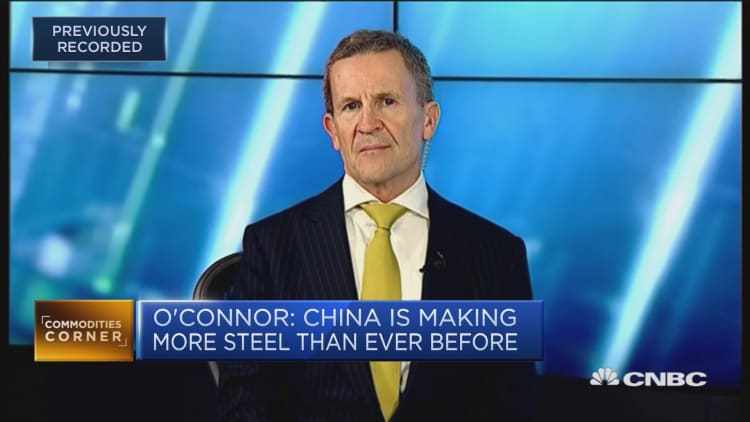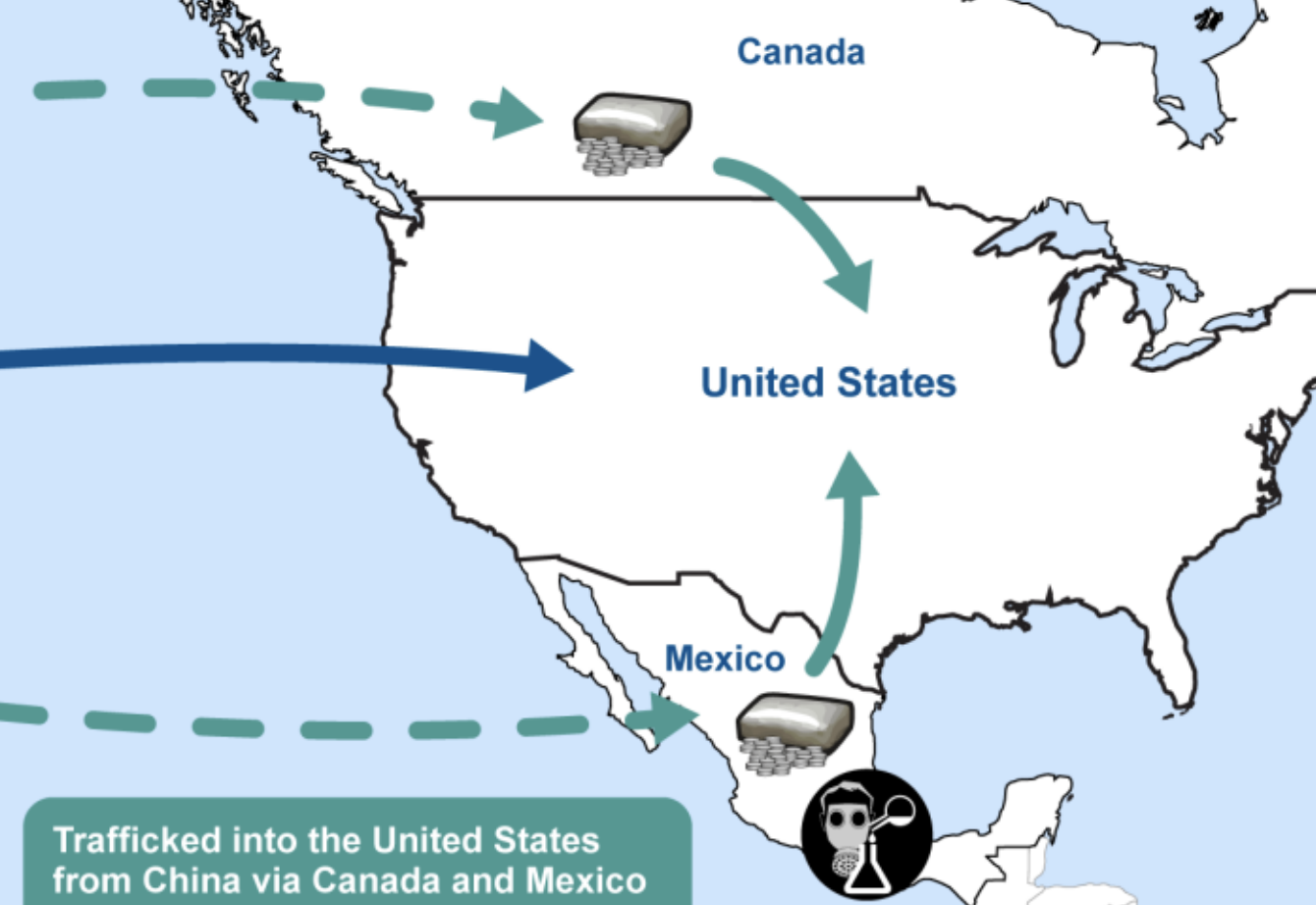Falling Iron Ore Prices: Analysis Of China's Steel Production Reduction

Table of Contents
China's Steel Production Slowdown: The Primary Driver
China's reduced steel production is the primary reason behind the current iron ore price fluctuations. Several key factors contribute to this slowdown:
Government Regulations and Environmental Concerns
The Chinese government has significantly increased its focus on environmental protection. This has led to:
- Increased scrutiny on environmental pollution from steel mills: Stricter monitoring and penalties for exceeding emission limits are forcing mills to curtail production or invest heavily in cleaner technologies.
- Stringent emission standards and stricter enforcement: New, more stringent emission standards are being implemented and enforced more rigorously, impacting the operational efficiency of many steel plants.
- Government initiatives promoting green steel production and reducing carbon emissions: The push towards carbon neutrality is driving investments in greener steel production methods, but this transition period involves temporary production slowdowns.
- Impact of carbon neutrality goals on steel production capacity: China's ambitious carbon neutrality goals necessitate a significant shift away from traditional, high-emission steel production processes, impacting overall capacity.
Weakening Domestic Demand
A significant slowdown in domestic demand within China further contributes to reduced steel production. Key factors include:
- Slowdown in China's real estate sector – a major consumer of steel: The struggling real estate market has drastically reduced the demand for steel used in construction projects.
- Reduced infrastructure spending impacting steel demand: A decrease in government investment in infrastructure projects translates directly into lower steel demand.
- Lower consumer confidence affecting overall demand for steel-related products: Weak consumer spending affects demand for various steel-based products, impacting overall production.
- Shifting economic priorities away from heavy industry: China's economic strategy is shifting towards a more service-based economy, reducing reliance on heavy industries like steel production.
Increased Steel Imports
The influx of cheaper imported steel is also impacting domestic Chinese production:
- Competition from cheaper imported steel impacting domestic production: Steel imports from countries with lower production costs are putting pressure on domestic Chinese producers.
- Trade policies and tariffs influencing the import market: International trade policies and tariffs play a crucial role in shaping the competitive landscape of the steel import market.
- Effect of global steel market dynamics on China's domestic production: Global steel market dynamics, including supply and demand fluctuations in other major steel-producing nations, also influence China’s domestic production levels.
Impact on Iron Ore Prices and Global Markets
The reduced demand for steel from China has created a ripple effect throughout the global iron ore market:
Supply and Demand Dynamics
The decreased Chinese demand has led to:
- Oversupply of iron ore in the global market due to reduced Chinese demand: This surplus of iron ore is a major contributor to the current price decline.
- Impact on iron ore mining companies and their profitability: Iron ore mining companies are experiencing reduced profitability due to lower prices and decreased demand.
- Price volatility and its effect on investment decisions: The volatility in iron ore prices is making it difficult for companies to make long-term investment decisions.
Implications for Other Steel-Producing Nations
The situation presents both challenges and opportunities for other steel-producing nations:
- Opportunities for other steel producers to fill the gap in the market: Other countries can potentially increase their steel exports to fill the reduced demand from China.
- Competition among steel producers and its effect on global prices: Increased competition among steel producers could further influence global steel and iron ore prices.
- Geopolitical implications of shifting global steel production: The shift in global steel production could have significant geopolitical implications.
Effect on Related Industries
The decline in iron ore prices impacts various related industries:
- Impact on the shipping industry transporting iron ore: The reduced demand for iron ore has reduced shipping volumes, impacting the shipping industry.
- Influence on the prices of related metals and commodities: The price fluctuations of iron ore can affect the prices of other metals and commodities.
- Consequences for downstream industries reliant on steel: Industries that rely on steel as a raw material are also affected by price changes and reduced availability.
Future Outlook and Predictions for Iron Ore Prices
Predicting the future of iron ore prices is complex, but several factors need consideration:
Potential for Price Recovery
Several factors could lead to a potential rebound in iron ore prices:
- Factors that could lead to a potential rebound in iron ore prices: Increased global demand, reduced supply, and changes in Chinese policies could lead to price recovery.
- Analysis of market trends and future demand projections: Analyzing market trends and future demand projections is crucial for predicting future prices.
- Influence of global economic recovery on steel and iron ore demand: A global economic recovery could potentially stimulate demand for steel and iron ore.
Long-Term Sustainability of the Industry
The long-term sustainability of the iron ore and steel industry depends on several key factors:
- Focus on sustainable steel production methods and their influence on future demand: The adoption of sustainable steel production methods will be key for long-term growth.
- Technological advancements impacting the industry's efficiency and sustainability: Technological advancements can improve efficiency and reduce environmental impact.
- The role of innovation in reducing the environmental impact of steel production: Innovation is crucial for mitigating the environmental impact of steel production.
Conclusion
The decline in iron ore prices is largely a consequence of reduced steel production in China, driven by government regulations, weakening domestic demand, and increased steel imports. This situation has significant ramifications for global markets, impacting various industries and prompting a reassessment of the future outlook for both steel and iron ore. While a price recovery is possible, long-term sustainability and technological advancements will play crucial roles in shaping the future of the industry. To stay informed about the fluctuating landscape of falling iron ore prices, continue to monitor market trends and analyses to make informed decisions about investments and future strategies in this dynamic sector. Understanding the complexities of iron ore price fluctuations is key to navigating this critical market.

Featured Posts
-
 Fentanyl And Trade How The Crisis Shaped Us China Negotiations
May 09, 2025
Fentanyl And Trade How The Crisis Shaped Us China Negotiations
May 09, 2025 -
 The Next Ovechkin 9 Nhl Players Who Could Break His Record
May 09, 2025
The Next Ovechkin 9 Nhl Players Who Could Break His Record
May 09, 2025 -
 2500 M De Vignes Plantes A Dijon Secteur Des Valendons
May 09, 2025
2500 M De Vignes Plantes A Dijon Secteur Des Valendons
May 09, 2025 -
 5 Key Factors Driving Todays Surge In The Indian Stock Market Sensex And Nifty
May 09, 2025
5 Key Factors Driving Todays Surge In The Indian Stock Market Sensex And Nifty
May 09, 2025 -
 Understanding The Attorney Generals Fake Fentanyl Demonstration
May 09, 2025
Understanding The Attorney Generals Fake Fentanyl Demonstration
May 09, 2025
